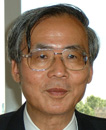Foreign Direct Investment in Japan – Part Two: Japan's Prefectures Attract Foreign Investors
Hiroshi Tsukamoto (President of JETRO – Japan External Trade Organization)
J. Sean Curtin (Fellow, GLOCOM)
A full list of articles in this series can be found here.
 In this second article about foreign direct investment into Japan, the president of the Japan External Trade Organization (JETRO) Hiroshi Tsukamoto discusses recent attempts by Japan's prefectures to attract overseas investment. In this second article about foreign direct investment into Japan, the president of the Japan External Trade Organization (JETRO) Hiroshi Tsukamoto discusses recent attempts by Japan's prefectures to attract overseas investment.
Sean Curtin: In the UK, JETRO is currently actively promoting foreign direct investment (FDI) in Osaka, Fukuoka and Kitakyushu. What do you think of Japanese prefectural level efforts to attract FDI? I am think here specifically of Hyogo prefecture which has been very successful since it teamed up with Procter & Gamble Far East Inc.. Since 2002, Hyogo has attracted 29 foreign firms. Do you think their approach should be copied by other prefectures?
Hiroshi Tsukamoto: I think that it would be a good idea if other local authorities followed Hyogo's success story. That is why JETRO has assisted a number of mayors and governors to come to cities like London, Milan and New York to promote FDI. For example, the very successful Invest Japan event held in Westminster on July 6 gained wide publicity. We are also helping mayors and governors at other promotional events in various European cities like Milan. We also have similar types of investment seminars in the USA. At such events high ranking local officials are also in attendance. Individually they are also organizing these types of operations. Indeed, top sales is a very important aspect in all this as is focusing on the company wishing to invest.
Taking care of potential customers in the friendliest manner is also of vital importance. That is why I am delighted that you have mentioned Procter & Gamble's investment in Hyogo Prefecture. I think this is just the kind of success story that other local authorities should emulate.
Sean Curtin: How do you respond to the criticism made by some big international corporations that in the past Japan's FDI efforts lacked a good customer-oriented approach?
Hiroshi Tsukamoto: Basically, I think that now a great many local authorities have very welcoming attitudes. So, I believe that in many prefectures and cities foreign investors will find an extremely friendly atmosphere. This is especially true since Prime Minister Koizumi pledged to double foreign investment.
Before, I think one problem has been that in many local authorities the number of people who spoke English fluently had been fairly limited. To overcome this hurdle, JETRO now has 35 offices spread all over Japan to assist and work together with local authorities to encourage foreign investment.
Sean Curtin: Do you think Prime Minister Koizumi's promotional efforts have helped attract foreign investment to Japan?
Hiroshi Tsukamoto: Yes, the Prime Minister's input has been very important. Additionally, other ministries like the Ministry of Economy and Industry also have their own focus for encouraging foreign direct investment. So they are now also preparing a wealth of English language literature on the subject. Furthermore, we now have what we call 'the no action letter' which basically allows people to protest about inaction or poor service.
Each government department is now required to respond to any criticism about FDI strategy. So now, I sincerely believe that we have established a solid framework for encouraging direct foreign investment.
A full list of articles in this series can be found here.
Related links
Japan is Flying Again – Hiroshi Tsukamoto
Japan External Trade Organization
JETRO London
| 




